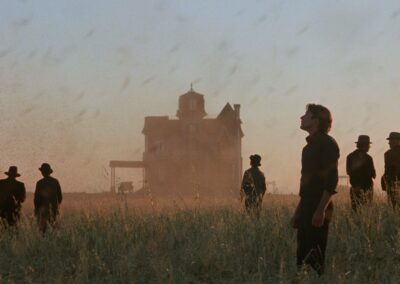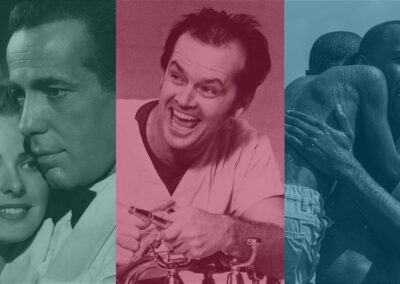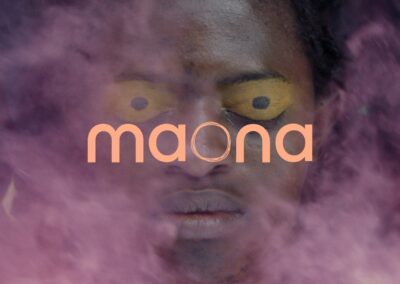Cinema lovers will continue to celebrate 2024 in style when the UPP screens a selection of films directed by the “none more maverick” German film director Werner Herzog in February. The season, which ties in with Radical Dreamer, the new BFI funded documentary about the great man, includes a number of significant movies he produced in the 1970s when, arguably, he was at the very top of his game, including three (the brilliant Aguirre, Wrath of God; Fitzcarraldo and the first “remake” of Murnau’s silent vampire masterpiece Nosferatu) which starred his nemesis, actor Klaus Kinski, who was arguably on a par with Werner in terms of madness: you could say they made a great partnership (as Les Blank’s 1982 documentary about the making of Fitzcarraldo was to reveal).
To say they don’t make ‘em like him anymore, is a serious understatement. Herzog, who did, indeed, once eat his shoe, is now in his 80s and these days, somewhat surprisingly, is best known as a supporting actor (he was the villain “Mr Big” in the Tom Cruise flop Jack Reacher and also turns up in “The Client” in The Mandalorian) but during his long career he has made over 60 films and documentaries.
What makes Herzog so interesting is not just that in the 70s he was a key player (alongside Wim Wenders and Fassbinder) in what became known as New German cinema or that he is renowned for making films under hazardous conditions in far flung locations (for example dragging a boat through the Peruvian jungle like his eponymous hero Fitzcarraldo). Nor is it because he made use of the fabulous music of “krautrockers” Popol Vuh in a number of his films (most memorably in Aguirre, Wrath of God) or that his films often reflect his childish sense of wonder and genuinely eccentric personality. It’s not even the tragic fact that the last film watched by Joy Division’s lead singer Ian Curtis, before he committed suicide, was Herzog’s 1977 Stroszek.
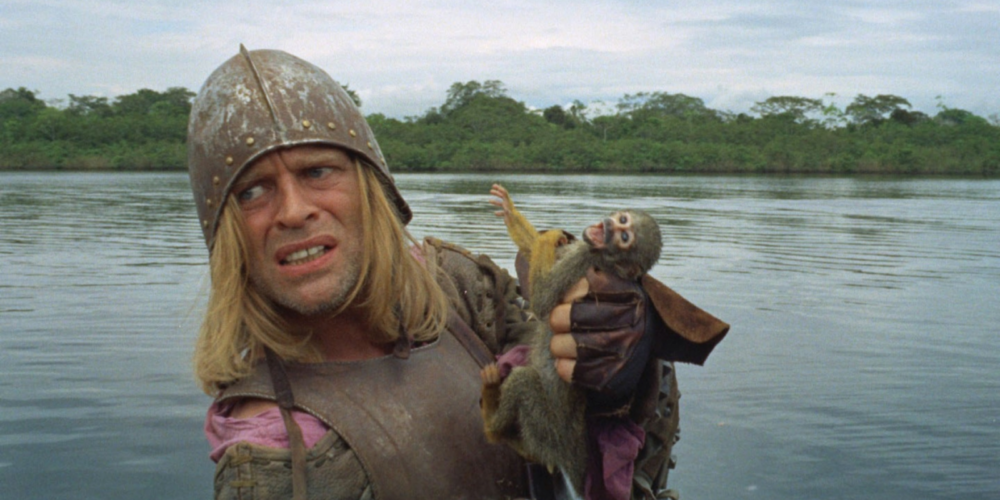
No, it’s the fact that Herzog made the kind of outsider cinema that, in the 1980s, a generation of discerning film-goers and students (myself amongst them) thrived upon. His films were the kind of “art-house” fare that got screened by film societies; what used to be called “repertory” theatres and movie houses before multiplexes and video came along and threatened to kill everything off.
It’s possibly difficult for anyone born in the digital age to fully appreciate how important the cinema experience was for those of us who grew up in a world where vinyl was king; communication came in the form of hand-written letters and diaries were locked away in drawers to keep them from prying eyes. Where the two or three photographs you possessed were framed pictures of you and your family taking a holiday on a freezing cold beach. Where books were things you prized and the pubs closed at 11pm.
It was also a period where TV in the UK consisted of three channels and was impossible to “record.” So if you wanted to see movies that you’d read about in learned magazines like Screen or Sight and Sound (or maybe discussed by Barry Norman on Film 79 – another font of cinematic wisdom) then you had to hope that they might show up on the BBC at Christmas; go out of your way to see them at a cinema specialising in “re-runs” (I went all the way to Paris to see A Clockwork Orange as it was effectively “banned” in the UK) or take a trip to London or another big city with a few art house venues (such as The Scala – which was recently the subject of a fascinating documentary some of you will have seen when it screened with a director Q&A at the UPP in January).
So, yes, back then, you could certainly “go to the pictures” (something we all did regularly) and a first date often consisted of asking a girl to see a film (girls never asked boys) and, of course mainstream films could be seen at your local ABC or Odeon – this was the era that gave birth to the blockbuster with films like Jaws, Star Wars and Alien blazing that particular trail. But you could also “discover” something for yourself by watching, perhaps, a European film (subtitled films, like today, almost never getting a mainstream release) or from another decade or maybe a bit risqué or obscure at cinemas which specialised in showing films that were slightly off the beaten track. Fortunately, the UPP is keeping that proud tradition afloat (hence the Herzog season) but it is one of only a handful of cinemas in the country doing so.
And what I always try and tell my students (whose ideas about a movie are often already fully formed by the internet before they even see it and, even then, they are more likely to be streaming it; watching it in chunks and fast-forwarding it) is that there was something to be said for “discovering” a film for yourself. Going out of your way to track it down gave a film something “value-added.” Seeing it on a big screen etched itself on you in ways a laptop or mobile phone cannot and sometimes the going to and from the cinema and the company you were with, added a richness to the experience that no amount of “clicking” can replicate.
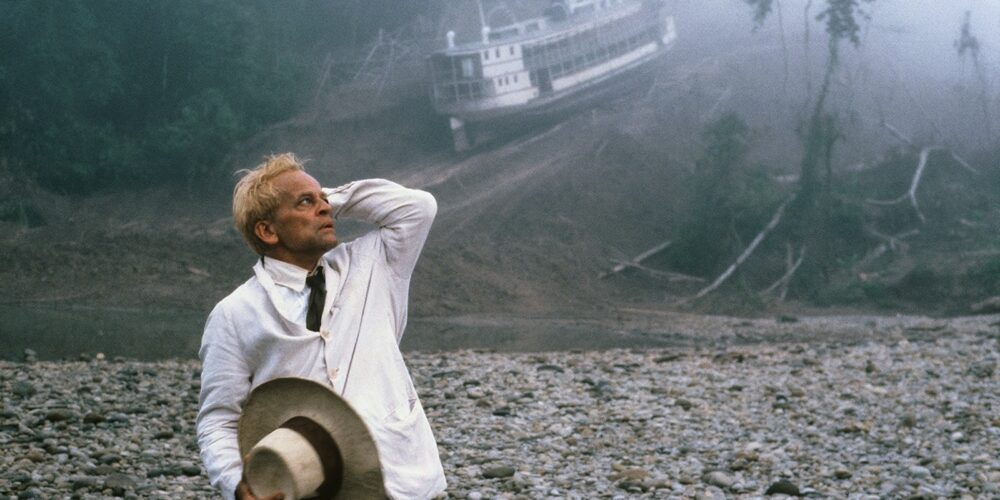
So it was that, in 1982, I walked all the way from Victoria train station to Camden to see Fitzcarraldo in homage to Herzog’s famous walk from Munich to Paris to see his dying friend Lotte Eisner – knowing that she would survive until he go there; watched The Enigma of Kasper Hauser and Aguirre, Wrath of God at the University film society in the company of friends both long-since departed and some still by my side and, bizarrely, caught what was then Herzog’s “latest” Nosferatu, in 1979, at the Gravesend ABC (the very definition of “flea-pit”) when it “opened” widely to cash in with the new-found taste for horror films which had been fuelled by Halloween and no end of rip offs (Terror Train, Prom Night, He Knows You’re Alone et al – all of which I caught at the cinema prior to the arrival of video, would you believe?). Herzog shot two versions of the film at the same time – one in German and another with the actors speaking in English so there are very subtle differences between each version (the one screening at the UPP is in English). Its poster, if you’ve never seen it, ranks as one of the greatest designs ever, by the way.
In this manner, I first encountered films which have stayed with me for a lifetime. They were not just things which entertained me on my journey but part of the journey itself. The opening shot in Aguirre, Wrath of God – a vertical tracking shot down impossible terrain; the timeless beauty of Isabelle Adjani; Kinski losing his sanity in various jungles; the otherworldliness of Bruno S’s performance as Kaspar Hauser. These are things you don’t easily forget.
In her learned essay on Herzog, which accompanies the BFI box set of his work, the academic Laurie Johnson alludes to the mountaineer Reinhold Messner, who observed:
“What we learn from mountain climbing is the exact opposite of what’s commonly assumed: that we want to do something heroic, so to speak. No. We go out into the wild world and realise how fragile, how tentatively we stand in this world.”
Herzog’s contributions to the world of film remind us that the journey we are all on should also be an adventure. And, like the best of adventures, will take us from the heroic heights to quiet moments of reflection and melancholy.
So that’s Herzog for you.
There’s method in his madness.
For full listings of our Werner Herzog classics season, click here.
Dr Andrew C Webber is a Film teacher and examiner with over 37 years’ experience. He currently contributes to both the Cinema of the 70s and 80s magazines (available on Amazon); cassette gazette fanzine (available from cassette pirate on e-bay) and the Low Noise music podcast available on Spotify and Apple podcasts.
